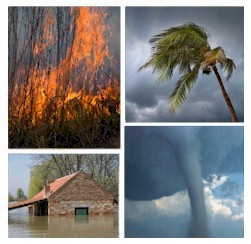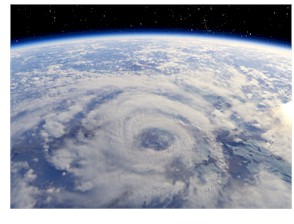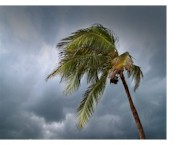|
|


Disaster Alert Systems and Services
 This section of our technical library presents articles written about Emergency Alert Systems and Disaster Recovery definitions, terms and related information.
This section of our technical library presents articles written about Emergency Alert Systems and Disaster Recovery definitions, terms and related information.
The 911Broadcast emergency notification and alert service can deliver a large number of phone calls using a network of phone systems employing digital phone lines simultaneously. Should a disaster such as a snow storm, wild fire or flood hit your area, 911Broadcast systems can alert your community quickly providing specific instructions if an evacuation is required.
This service is available using our emergency broadcasting systems. If a dangerous chemical spill occurs in your community, you can target specific areas to call. If a severe snow storm hits your area, your community can be notified of school closings or event cancellations.
Contact DSC Today for a FREE analysis and quote and to learn more about our emergency notification systems and services.
Emergency Alert System (EAS) Event Codes
Reprint: NOAA's National Weather Service
Office of Climate, Water, and Weather Services
The Federal Communications Commission issued a Report and Order (R&O), effective May 16, 2002, amending the EAS rules. The change included adding numerous new civil emergency, weather and natural disaster event codes and NWS marine area location codes.
The complete list of EAS event codes (also known as NWR-SAME Codes) is shown below. The chart below is divided into two groups: Codes in use before and after June 30, 2004. NWR and the EAS use identical digital protocols. NWS used Weather Radio as its primary means to activate EAS.
Codes shown below as Operational were implemented on June 30, 2004. Older SAME-enabled receivers may display them as unknown codes, although they should still play the audio. Check your receiver's manual or the manufacturer's website for more information. If you do not receive the new codes, you may want to consider buying a newer model. You will continue to receive the event codes in effect before June 30, 2004.
EAS Event (NWR-SAME) Codes
|
| Weather-Related Events |
NWR-SAME Code |
Status |
| Blizzard Warning |
BZW |
Operational |
| Coastal Flood Watch |
CFA |
* Operational * |
| Coastal Flood Warning |
CFW |
* Operational * |
| Dust Storm Warning |
DSW |
* Operational * |
| Flash Flood Watch |
FFA |
Operational |
| Flash Flood Warning |
FFW |
Operational |
| Flash Flood Statement |
FFS |
Operational |
| Flood Watch |
FLA |
Operational |
| Flood Warning |
FLW |
Operational |
| Flood Statement |
FLS |
Operational |
| High Wind Watch |
HWA |
Operational |
| High Wind Warning |
HWW |
Operational |
| Hurricane Watch |
HUA |
Operational |
| Hurricane Warning |
HUW |
Operational |
| Hurricane Statement |
HLS |
Operational |
| Severe Thunderstorm Watch |
SVA |
Operational |
| Severe Thunderstorm Warning |
SVR |
Operational |
| Severe Weather Statement |
SVS |
Operational |
| Special Marine Warning |
SMW |
* Operational * |
| Special Weather Statement |
SPS |
Operational |
| Tornado Watch |
TOA |
Operational |
| Tornado Warning |
TOR |
Operational |
| Tropical Storm Watch |
TRA |
* Operational * |
| Tropical Storm Warning |
TRW |
* Operational * |
| Tsunami Watch |
TSA |
Operational |
| Tsunami Warning |
TSW |
Operational |
| Winter Storm Watch |
WSA |
Operational |
| Winter Storm Warning |
WSW |
Operational |
| |
| Non-Weather-Related Events |
NWR-SAME Code |
Status |
National Codes-Required |
| Emergency Action Notification |
EAN |
Not currently implemented on NWR |
| Emergency Action Termination |
EAT |
Not currently implemented on NWR |
| National Information Center |
NIC |
Operational |
State and Local Codes-Optional |
| Avalanche Watch |
AVA |
* Operational * |
| Avalanche Warning |
AVW |
* Operational * |
| Child Abduction Emergency |
CAE |
* Operational * |
| Civil Danger Warning |
CDW |
* Operational * |
| Civil Emergency Message |
CEM |
Operational |
| Earthquake Warning |
EQW |
* Operational * |
| Evacuation Immediate |
EVI |
Operational |
| Fire Warning |
FRW |
* Operational * |
| Hazardous Materials Warning |
HMW |
* Operational * |
| Law Enforcement Warning |
LEW |
* Operational * |
| Local Area Emergency |
LAE |
* Operational * |
| 911 Telephone Outage Emergency |
TOE |
* Operational * |
| Nuclear Power Plant Warning |
NUW |
* Operational * |
| Radiological Hazard Warning |
RHW |
* Operational * |
| Shelter in Place Warning |
SPW |
* Operational * |
| Volcano Warning |
VOW |
* Operational * |
|
| Administrative Events |
NWR-SAME Code |
Status |
| Administrative Message |
ADR |
Operational |
| National Periodic Test |
NPT |
Not currently implemented on NWR |
| Network Message Notification |
NMN |
Not currently implemented on NWR |
| Practice/Demo Warning |
DMO |
Operational |
| Required Monthly Test |
RMT |
Operational |
| Required Weekly Test |
RWT |
Operational |
Naming Convention for EAS Event Codes
The FCC Report and Order which became effective May 16, 2002, established naming conventions for EAS event codes. In most cases, and for all future codes to be approved, the third letter of all hazardous state and local event codes is limited to one of four letters:
- "W" for WARNINGS
- "A" for WATCHES
- "E" for EMERGENCIES
- "S" for STATEMENTS
Note: The existing event codes for Tornado Warning (TOR), Severe Thunderstorm Warning (SVR) and Evacuation Immediate (EVI) will not be changed to conform to this naming convention.
- A WARNING is an event that alone poses a significant threat to public safety and/or property, probability of occurrence and location is high, and the onset time is relatively short.
- A WATCH meets the classification of a warning, but either the onset time, probability of occurrence, or location is uncertain.
- An EMERGENCY is an event that, by itself, would not kill or injure or do property damage, but indirectly may cause other things to happen that result in a hazard. For example, a major power or telephone loss in a large city alone is not a direct hazard, but disruption to other critical services could create a variety of conditions that could directly threaten public safety.
- A STATEMENT is a message contaning follow up information to a warning, watch, or emergency
Severe Weather Warnings And Alerts Phone Service
 Should a severe weather condition occur in your area, our phone services can help warn your community. With our emergency notification phone service, you can broadcast warning messages to thousands of households in your community, warning of catastrophic disasters including severe weather and storms.
Should a severe weather condition occur in your area, our phone services can help warn your community. With our emergency notification phone service, you can broadcast warning messages to thousands of households in your community, warning of catastrophic disasters including severe weather and storms.
Messages can be simultaneously delivered in just minutes using our network of phone systems and services. Pre-recorded warning messages can be played giving households information regarding the severe weather location and whether a community evacuation is planned or necessary.
You can send a broadcast warning to specific neighborhoods or communities in the event of a severe weather storm and provide priority delivery of these messages to those nearest the severe weather disturbance. Multiple messages can be delivered to different members of the community based upon proximity to the weather alert.
Calls can be directed to operators that are standing by to handle special individual emergencies.
Messages can also be broadcast seeking volunteers or special assistance from emergency personnel.
 Other applications include warning residents when the danger of severe weather conditions is at a high level. Travel and activity restrictions can likewise be broadcast using this service.
Other applications include warning residents when the danger of severe weather conditions is at a high level. Travel and activity restrictions can likewise be broadcast using this service.
Severe weather warning messages sent to households in this fashion can be simple warnings with specific or general instructions. If the community needs feedback from the call, an interactive response can be programmed into the message allowing the person to either acknowledge the call or to contact someone. Messages can vary based upon proximity to the event, with different degrees of broadcast warning and instructions.
To learn more about our severe weather and emergency response / disaster recovery phone service, please visit our Emergency Broadcast System web page.
Contact DSC Today for a FREE analysis and quote and to learn more about our emergency notification systems and services.
|




 This section of our technical library presents articles written about Emergency Alert Systems and Disaster Recovery definitions, terms and related information.
This section of our technical library presents articles written about Emergency Alert Systems and Disaster Recovery definitions, terms and related information.
 Should a severe weather condition occur in your area, our phone services can help warn your community. With our emergency notification phone service, you can broadcast warning messages to thousands of households in your community, warning of catastrophic disasters including severe weather and storms.
Should a severe weather condition occur in your area, our phone services can help warn your community. With our emergency notification phone service, you can broadcast warning messages to thousands of households in your community, warning of catastrophic disasters including severe weather and storms.
 Other applications include warning residents when the danger of severe weather conditions is at a high level. Travel and activity restrictions can likewise be broadcast using this service.
Other applications include warning residents when the danger of severe weather conditions is at a high level. Travel and activity restrictions can likewise be broadcast using this service.